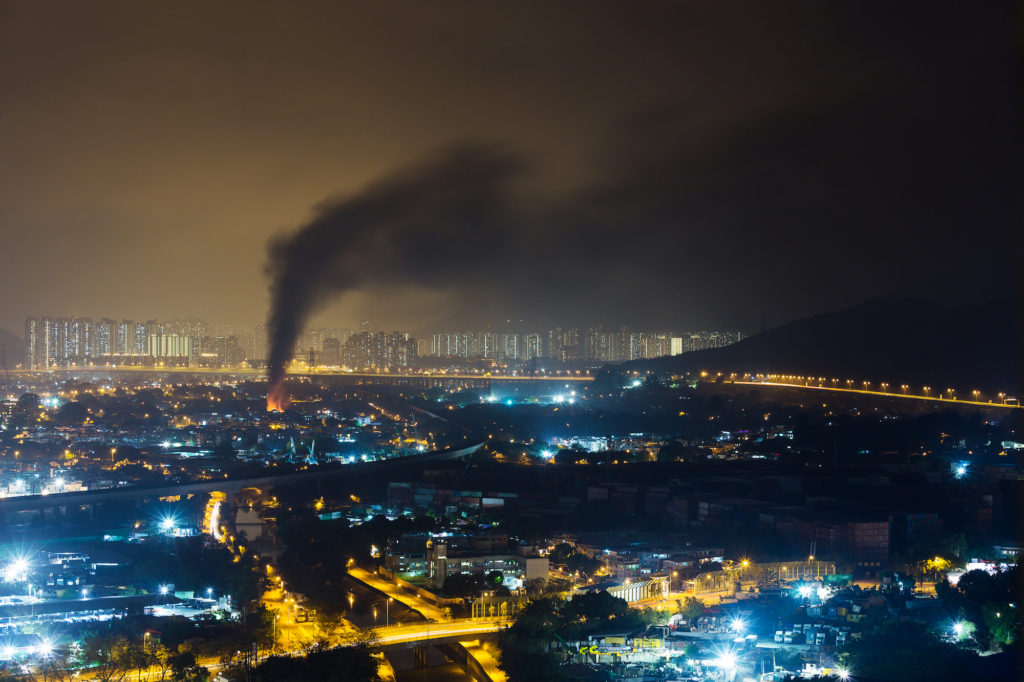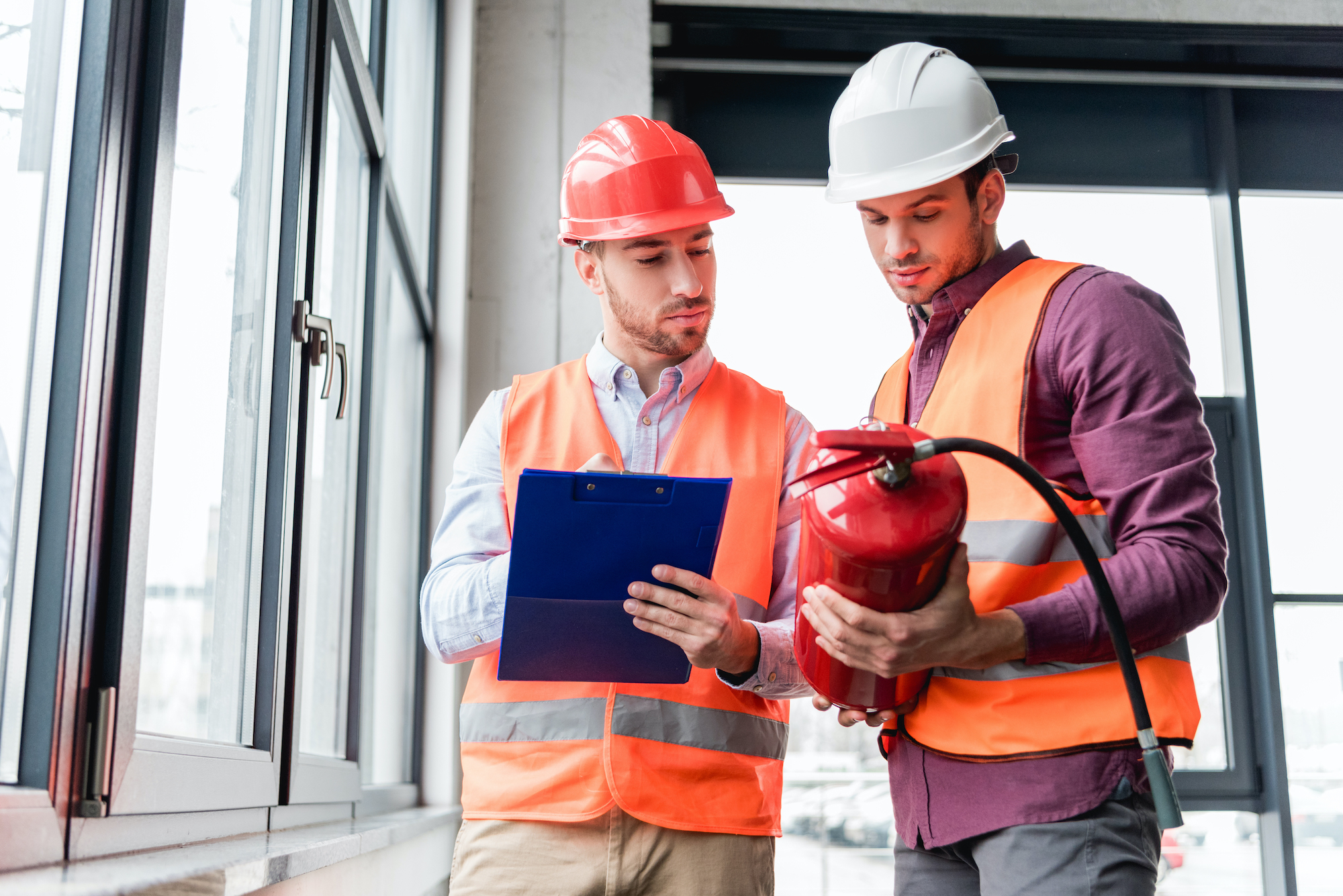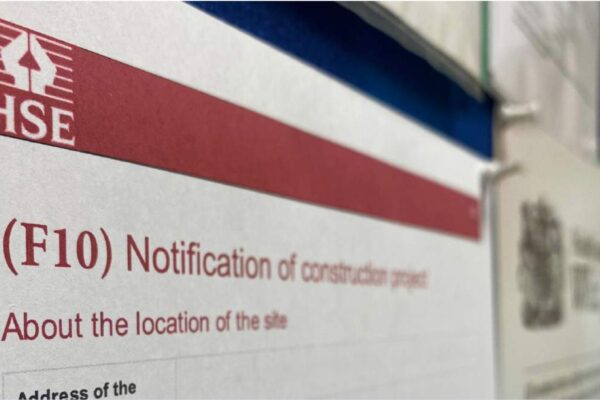7 Simple Steps: How many fire Marshals do I need?
Imagine watching the news, and suddenly you get a report of a burning building in the local area.
You take a second glance and it’s your companies office.
Smoke billows from the building, and people are seen running from the building. It looks like the entire building will be lost the in flames.
You suddenly take a deep breath as you wonder if your colleagues all got out safely.
Did anyone check each floor?
What about those contractors working on the roof.
Come to think of it Julie the Managing Directors personal assistant, was working and hopefully, the security guard came to her rescue with the evacuation chair.
You hope that the onsite fire marshals were there to coordinate the evacuation.
But then you worry that with furlough and staff working from home you’d underestimated the numbers.
You sit back and ask yourself How many fire marshals do we need in our business?’
Did I calculate the right number of fire marshalls?
Were all areas and occupancies levels in the building covered?
Stop those thoughts right now.
Take another deep breath and carefully read this blog.
The bad news is … there is no specific number of fire marshals required in your business.
The good news is we’ve outlined the main factors and tips you need to consider when determining how many fire marshals you choose to put in place.

Heres 7 simple steps to help you urgently determine how many fire marshals you may need:
1. Evacuation time
Firstly in an emergency the aim is to get Julie, contractors and all employees out of the building and to a place of safety as swiftly and efficiently as possible.
There is no Available Safe Egress Time (ASET), but the benchmark is often seen as 2.5 minutes, however in reality, each building and situation is different, so that time is not always appropriate.
When identifying a response time you would need to understand the speed of detection, recognition, response and travel times for an evacuation. These factors rely on systems and the individuals response in an emergency situation. Often in a fire the state of panic creeps in.
This would affect the overall evacuation time, but having a team of trained individuals with a knowledgeable but calming effect on the occupants in an emergency creates a smoother response.
2. Occupants
Evacuating the area or premises can sometimes be tricky depending on how the occupants respond to the situation. Just think, if the occupants are elderly, young or disabled like Julie then the reaction times could possibly be reduced in an emergency.
This could be due to hearing impairments, physical abilities or lack of knowledge of the dangers of fire. For this it is important that procedures and support are in place to accommodate these issues. That’s where the role of the fire marshal is vital.
3. Fire exits
It is important to ensure exits and emergency exits are easily accessible and in good order to restrain a fire and keep them at bay long enough to evacuate all people in an emergency. Also being aware of the number and size of exits available as this could determine the number of people allowed in the building at one time.
4. Premises Fire Risk: Low, Medium or High
Check your business Fire Risk Assessment to help you understand the overall fire risk both in terms of people and premises.
It should provide you with some indication of the level of risk and can support you with getting the correct number of fire marshals in place. Below we explain what types of things are associated with fire risk levels and our recommendations for identifying the quantity required.
For low fire risk premises
This is premises with minimal risk of fire. Only a small number of premises will fall into this category, such as some small shops and offices.
Generally they meet most or all of the following criteria
- Minimal combustible or highly flammable materials
- Minimal heat sources which could ignite a fire
- Buildings built of low risk materials and equipment and fire safety measures are regularly maintained
- Occupants are not from high-risk groups such as disabled people, the young or old.
- Fire holding and travel distance to exits are short and speed of evacuation is fast
Suggested fire marshal requirement for Low risk premises
- For less than 50 people present = 1 fire marshal
- 50 – 100 people present = 2 fire marshal’s
- For each 100 people thereafter = an additional 1 fire marshal
Remember for all risk levels if the premises is large and more than one floor then as an absolute minimum you should have one marshal per floor. Also always make sure you allow additional requirements from fire marshal for shift cover and sickness / holidays
Medium fire risk premises
This is premises with a normal risk to safety. Unlike low risk, most premises fall within this category, such as bigger offices and shops, warehouses, and most factories.
Generally, they meet most or all of the following criteria
- Some quantities of combustible or highly flammable materials
- Activities include some sources of heat which could ignite a fire
- Buildings are not built of non traditional lower risk materials and equipment and fire safety measures are sufficiently maintained
- There are minimal high risk individuals on the premises, such as the young, elderly, or disabled
- Fire holding and travel distance to exits are reasonable and speed of evacuation is average.
Suggested fire marshal requirement for Medium risk premises
- For less than 20 people present = 1 fire marshal
- 20 – 75 people present = 2 fire marshal’s
- For each 75 people thereafter = an additional 1 fire marshal
Remember for all risk levels if the premises is large and more than one floor then as an absolute minimum you should have one marshal per floor. Also always make sure you allow additional requirements from fire marshal for shift cover and sickness / holidays
High fire risk
This is premises with a high risk to safety.
Generally, they meet most or all of the following criteria
- Large quantities of combustible or highly flammable materials are present on the premises.
- Activities include large quantities of heat sources which could ignite a fire
- Construction and building is irregular using varying materials minimising fire spread and equipment and fire safety measures are barely maintained
- The chance of fire and smoke spread is highly likely
- there is a large number of high risk individuals, such as the young, elderly, or disabled
- the complex layout of the building and sub-par fire safety measures provides inadequate evacuation times.
examples of high risk levels:
This could include restaurants or catering kitchens, industrial premises with large storage of flammable liquids or gases, or use a lot of heat in their processes. Also premises with large quantities of high risk occupants, such as in hospitals, care homes, childcare nurseries and schools
Suggested fire marshal requirement for High risk premises
- For less than 15 people present = 1 fire marshal
- 15 – 50 people present = 2 fire marshal’s
- For each 50 people thereafter = an additional 1 fire marshal
Remember for all risk levels if the premises is large and more than one floor then as an absolute minimum you should have one marshal per floor. Also always make sure you allow additional requirements from fire marshal for shift cover and sickness / holidays
5. Selecting the right person to be a Fire Marshal
Fire Marshals play a major role in the workplace. The purpose of the fire marshal is to support a business to meet their legal duties and deliver a safe working environment.
Depending on the risks, this usually requires a team of trained and competent people to assist and take some responsibility and accountability for the fire safety in a workplace.
With the level of responsibility associated with this role, choosing the right people is important.
When choosing a fire marshal, you must consider;
- Do they have the right capabilities to be a fire marshal?
- Are they trained and have sufficient knowledge?
- And, Can they contribute to the business requirements?
By asking these questions you can determine if you have the right people in place to support you.
Having competent fire marshals is important because their list of responsibilities can be large and often quite technical. Some of the duties passed to fire marshals can be;
- Regularly check that fire exits and escape routes and consider disabled staff and visitors with their personal evacuation plans
- Establish ‘safe havens’ in the building
- Check the fire extinguishers haven’t been moved, and that their servicing is up to date.
- Make sure all electrical equipment is suitable, in safe condition and that testing is up to date
- Arson awareness and control of fire risks
- Regularly check that emergency lighting and alarm points are working and periodically tested
- Make sure all new employees know the fire safety procedures, and where to go in the event of an emergency
- And, arrange fire drills
| Need Fire Marshall Certification?
Need a Fire Warden certificate for you or a member of your team? Our face to face practical courses can be delivered at your workplace. . You can have your certificate with you in as little as 3 to 4 hours |
6. Check your laws
Here in England and Wales we refer to The regulatory Reform (fire safety) Order 2005 which lays out the duties that a responsible person must deliver in order to be safe, compliant and up to date with their fire safety and provide safety training and instruction for the works carried out in their business.
Wherever you are in the world, always refer to your local laws. Seek advice from your local fire department if you need further support.
7. Get in touch
Hopefully this should have given you an insight into the purpose of the fire marshal and things to consider when recruiting them within your team.
Although there is no set number of fire marshals required in a business, each organisation is different so the key is to take control of your fire risks and this will help you to understand what fire marshals you need.
But remember safety is the number one priority so sometimes more is better.
If there are any unanswered questions or you would like advice from one of our dedicated consultants, get in touch at hello@prosafetymanagement.co.uk
You can also book our fire marshal training by checking out our course page.





